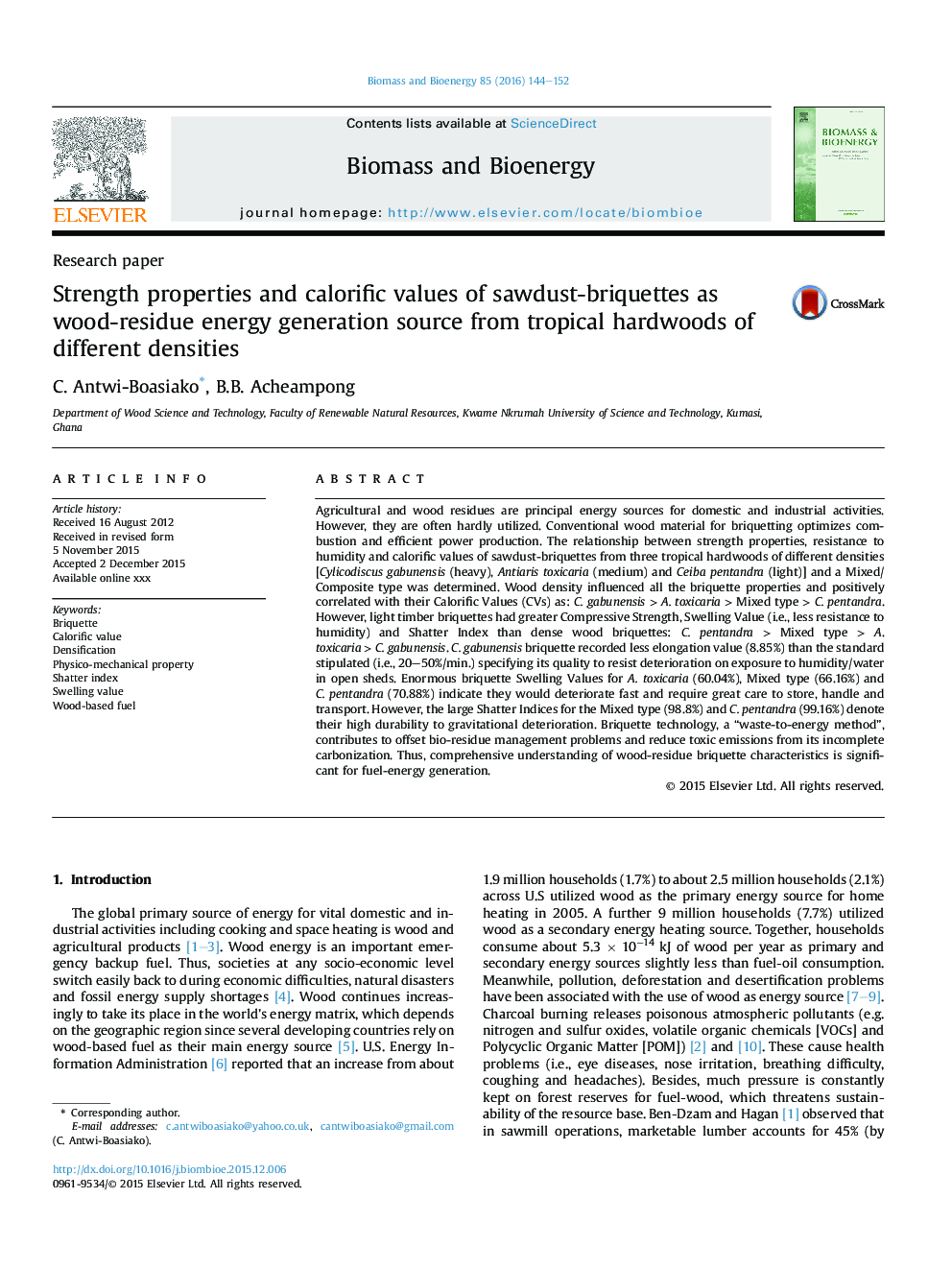| Article ID | Journal | Published Year | Pages | File Type |
|---|---|---|---|---|
| 7063517 | Biomass and Bioenergy | 2016 | 9 Pages |
Abstract
Agricultural and wood residues are principal energy sources for domestic and industrial activities. However, they are often hardly utilized. Conventional wood material for briquetting optimizes combustion and efficient power production. The relationship between strength properties, resistance to humidity and calorific values of sawdust-briquettes from three tropical hardwoods of different densities [Cylicodiscus gabunensis (heavy), Antiaris toxicaria (medium) and Ceiba pentandra (light)] and a Mixed/Composite type was determined. Wood density influenced all the briquette properties and positively correlated with their Calorific Values (CVs) as: C. gabunensis > A. toxicaria > Mixed type > C. pentandra. However, light timber briquettes had greater Compressive Strength, Swelling Value (i.e., less resistance to humidity) and Shatter Index than dense wood briquettes: C. pentandra > Mixed type > A. toxicaria > C. gabunensis. C. gabunensis briquette recorded less elongation value (8.85%) than the standard stipulated (i.e., 20-50%/min.) specifying its quality to resist deterioration on exposure to humidity/water in open sheds. Enormous briquette Swelling Values for A. toxicaria (60.04%), Mixed type (66.16%) and C. pentandra (70.88%) indicate they would deteriorate fast and require great care to store, handle and transport. However, the large Shatter Indices for the Mixed type (98.8%) and C. pentandra (99.16%) denote their high durability to gravitational deterioration. Briquette technology, a “waste-to-energy method”, contributes to offset bio-residue management problems and reduce toxic emissions from its incomplete carbonization. Thus, comprehensive understanding of wood-residue briquette characteristics is significant for fuel-energy generation.
Related Topics
Physical Sciences and Engineering
Chemical Engineering
Process Chemistry and Technology
Authors
C. Antwi-Boasiako, B.B. Acheampong,
